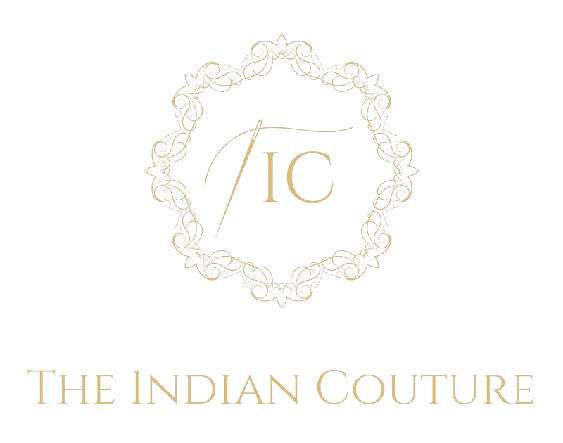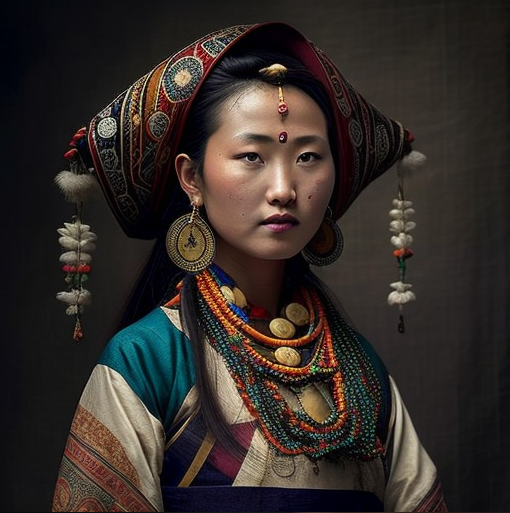On numerous occasions, including festivals, religious rituals, traditional dances, and cultural events, Sikkim women and girls style themselves in traditional Sikkim dress. The traditional Sikkim dress is sworn as pride and justice to centuries-old deep roots. Its colours feel so vibrant that they can be eye-pleasing.
But since 1975–76, when Sikkim joined the Indian Union, rural residents have felt the full force of globalisation. As a result, Nepali ethnic Sikkimese and other rural residents of Sikkim now favour Western attire styles.
But the people of Sikkim have kept their traditions alive in how they design and style their dresses. So even though they yearn for fashionable schemes, their culture is well-represented in everything they do, wear, and eat.
When do Sikkim Women and Girls Wear Traditional Dresses?
The favourite of all - marriages - is a celebration in full bloom. Women and girls take pride in bridal festivities and adorn themselves in traditional Sikkim dresses throughout the day. The streets are lit up, and the houses sing the chorus of joy and laughter.
Losar, the Tibetan New Year; Saga Dawa, the Buddhist celebration of the full moon; and Lhabab Duchen, the festival of the Buddha's ascension from heaven, are some significant occasions where traditional Sikkim dresses are worn for cultural integrity and celebrations.
From Festivals to Everyday Wear: A Look into Sikkim's Dressing Styles
The availability of dress materials in the market significantly impacts Sikkimese dress styles because the state needs to produce dress materials save for some traditional dress materials. Traditional Sikkim dresses are produced from natural fibres like cotton, silk, and wool. Still, Sikkim people prefer those made from synthetic materials since they better complement their preferred dresses' aesthetic and colour scheme.

Alternatively, you may wish to take a look at the various types of embroidered suits we offer or browse through them on your own
The Cultural Significance of Sikkim's Traditional Dress
As with the Tibetans, the Bhutia ethnic group favours the materials readily available in Tibet (China) for the same area. People fancy new dressing styles, and Sikkim's culture and traditions give them enough liberty. Regarding their traditional Sikkim dress, members of the Lepcha ethnic group lean toward using self-created handwoven textiles and silk. However, when it comes to everyday dresses, a person's wardrobe selection is determined by what's readily available.
Look at 9 famous Sikkim traditional dresses that women and girls prefer on these special occasions and daily wear.
Number 1: Bakhu - Traditional Bridal Dresses Worn by Women in Sikkim
The Bakhu is the most common traditional Sikkim dress worn by men and women. Designs of this style of dresses are long, loose dresses crafted from a solid woollen fabric that suits the frigid Himalayan climate.
They are the most popular known traditional wedding dresses in Sikkim.
This garment is deeply rooted in Sikkimese tradition and is revered as an integral aspect of the national identity. The bakhu is not just reserved for festive occasions; many individuals, especially the elderly and those who reside in rural areas, wear it daily.
---Do you also want to know about Traditional Indian Wedding Dresses? Visit our blog titled "Traditional Indian Wedding Dresses for Women & Girls: Top Looks and FAQs" ---
Number 2: Mekhela Sador - Sikkim Traditional Dresses Worn by Mostly Married Women in Sikkim
The mekhela is a bottom draping piece, and the sador is an upper shawl-like piece.
A long skirt called mekhela is wrapped around the waist, and a shawl called sador is worn over the shoulder and sometimes over the head.

The dresses are generally embellished with elaborate motifs, embroidery, and beadwork. It is made of silk, cotton, or another traditional fabric.
Also, many ladies, especially the elderly and those who live in rural areas, wear them daily. The traditional Sikkim dress is deeply rooted in its culture and is highly valued.
Number 3: Pharia - Sikkim Traditional Dresses Worn by All-Age Women
Women of Nepalese ancestry living in Sikkim tend to favour Pharia dress and style. The Bhutias traditionally dress in loose-fitting, long shirts knotted on all four sides.
They are usually worn by folk dancers. So it is custom-designed most of the time according to the best fit for the women and girls.
There are also a number of categories from which to choose.
Number 4: Bhutanese Kira - Sikkim Traditional Dresses for Girls and Women
Bhutanese Kira is a loose robe-like garment. It is an ankle-length dress woven with fine and delicate fabrics. They come in vibrant colours. The fabric is rectangular, wrapped around the body, and pinned at both shoulders.
Over the traditional Sikkim dress, a rachu (a small, embroidered piece of clothing draped over the left shoulder) is worn.
Number 5: Lepcha Dress - Traditional Dresses Worn by Married Ladies in Sikkim
Lepcha Dress is the name given to the Sikkim traditional dress worn by the Lepcha people. The garment has a distinct style that combines classic and contemporary features.
Lepcha women traditionally wear a long skirt (phari) with a shorter shirt (kurta) that falls just below the knee. They, too, are articulated with embroidery. The phari is sewn from a breathable fabric like cotton or silk.
Number 6: Pangden - The Fashionable Sikkim Traditional Dress
A scarf called a "Pangden" is a critical component of the traditional attire of the state of Sikkim. The pangden, which can be produced from either silk or cotton, is known for its elaborate embroidery of traditional patterns and motifs.
It's a shawl, a scarf, and a decorative accessory all rolled into one. Various colours, patterns, and motifs are used to create the pangden.
--- Also, would you like to know more about the importance of ethnic wear for women? Visit our blog Named IMPORTANCE OF ETHNIC WEAR FOR WOMEN.Top FAQ's ---
A Closer Look at the Traditional Sikkim Girl Dress
Sikkim girls, too, wear traditional dresses on their favourite occasions and festivals. Younger girls wear Sarki region dresses, Chhetri region dresses, and salwar kameez, highlighting the significance of traditional Sikkim girl dresses. The next three are types of traditional Sikkim girl dress.
Number 7: Tongali - Sikkim Traditional Dress for Young Girls
Tongali is the name for the traditional Sikkim girl dresses worn in rural regions of Sikkim. This dress is originally from Tanzania. It is constructed of handwoven silk or cotton. It is generally embroidered with elaborate motifs, patterns, and symbols of cultural importance.
The Tongali garment has a distinct and vibrant style that combines traditional and contemporary features. It usually has crimson-red colour depicting positivity.
Number 8: Dumbum - Traditional Sikkim Girl Dresses
Women in Sikkim traditionally wear the "Dumbum," a traditional dress. The Dumbum is a dress that falls just below the knee and is traditionally woven from silk or cotton and embroidered with elaborate designs and patterns that have profound cultural importance. This garment is a sign of Sikkim's cultural heritage.
The Dumbum is symbolic of Sikkim's illustrious past and vibrant present. It is customary to wear this garment at cultural celebrations, religious observances, and traditional rituals.
Number 9: Salvar Kamiz - Traditional Dresses Worn by Urban Ladies in Sikkim
Apart from saree, blouses, shawls, and graziers, women and girls in urban areas of Sikkim choose to wear traditional dresses of Punjab, like salvar kameez.
Salwar Kameez refers to a traditional Indian outfit consisting of baggy pants (named salwar) and a long, tunic-like shirt (called kameez).
The Salwar Kameez is a popular choice for women across India. It is even more common in the state of Sikkim. It is a typical style among Sikkimese ladies, especially the younger generation. Many urban women and girls prefer salwar kameez because of its traditional look and feel and the brightening colours that give them a royal introduction.
The Use of Sikkim Dress Drawings to Illustrate the Traditional dresses
Drawings of traditional Sikkim dresses can be used to portray them visually, highlighting their beauty and cultural value. In addition, drawing lets one focus on the minute details, elaborate patterns, and distinctive designs that characterise Sikkim's traditional dresses.
It enables a greater comprehension of the design and tailoring of these clothes, which can be challenging to fully grasp through images alone.
It can be a fantastic method to draw attention to the culture and show off the variety and richness of Sikkim's traditional dresses to a larger audience.
--- Want to know more about traditional Indian dresses? Visit our blogs about traditional dresses ---
- Maharashtrian Dress
- Assam Dress
- Sikkim dress
- Kerela Dress
- Rajisthani Dress
- Kashmiri Dress
- Gujarati Dress
Traditional Sikkim Dress: Images of Timeless Beauty and Heritage
This traditional Sikkim dress reflects the timeless cultural history and longstanding traditions. Images of these dresses can be viewed to gain an understanding of the craftsmanship and enduring elegance that goes into making them.
Each garment features its distinctive combination of colours, patterns, and motifs rich in cultural significance. We may learn about the history, culture, and beliefs of the people of Sikkim from the portrayal of their traditional dresses.
Images of Sikkim's traditional dress portray the gracefulness and artistic qualities and the contexts in which they are worn. These photographs glimpse Sikkim's rich cultural history and highlight traditional attire's everlasting allure and significance.

What can The Indian Couture do for You?
At The Indian Couture, our artisans and designers demonstrate expertise in custom-designing traditional Sikkim dresses for special occasions like weddings, festivals, celebrations, etc., and daily fashion.
We have expertise in designing and stitching salwar kameez. There are multiple designs already showcased on our online shop.
We customise, design, and stitch according to your needs and requirements.
Please tell us your needs and requirements, and we will handle the rest for you. We can custom-design traditional Sikkim dresses for you as well.
Save your time and money. Get in touch with us today!









